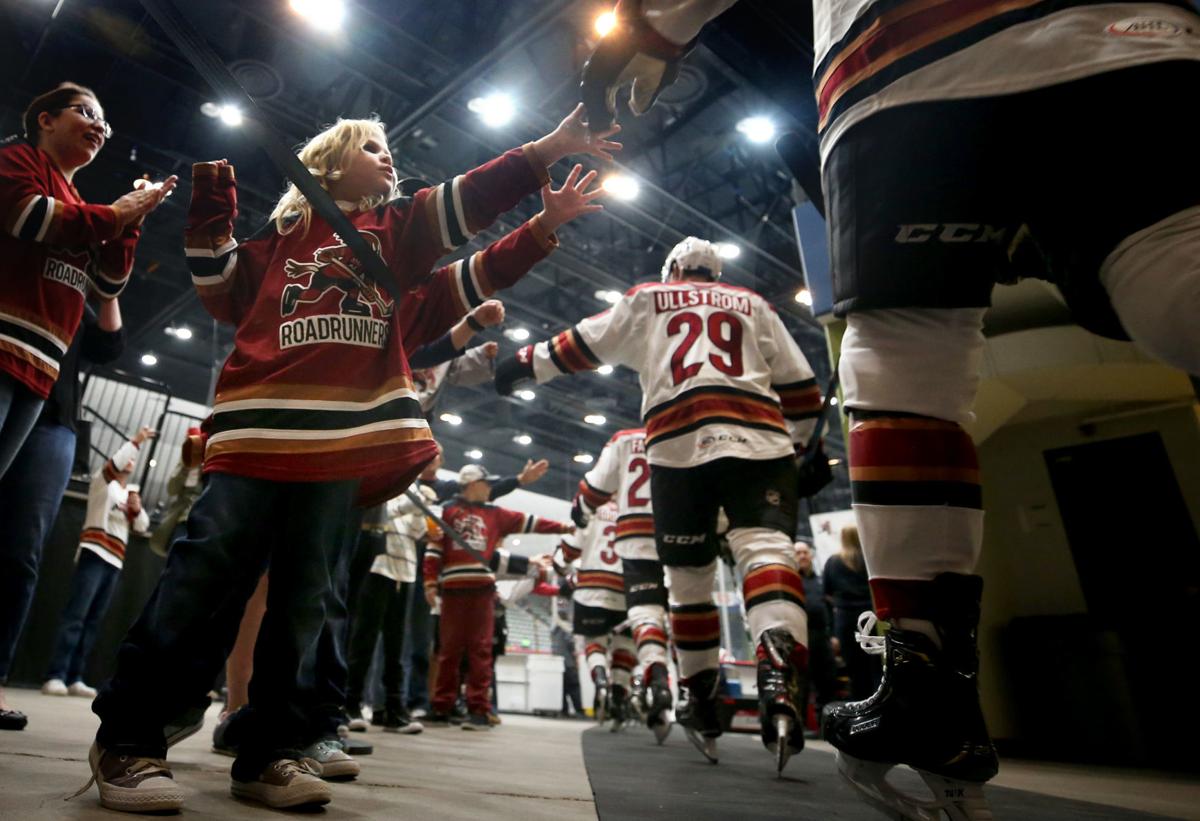Tucson Roadrunners coach Jay Varady deliberately refuses to dwell on the past.
How the schedule may have shaken out, injuries that messed with his team’s chemistry, a result or two that didn’t go his team’s way — “all of that is out of our control now,” Varady might have said once or even 25 times this past season.
But reached by phone on his way out of Tucson last week — the Roadrunners’ 2018-19 season over while the American Hockey League’s Calder Cup Playoffs had just hit full swing — Varady broke character for a quick moment. He briefly lamented what could have been.
“The biggest lesson learned is just how important every point really is,” Varady said. “You get into a set of games in November or December … it’s hard in the moment to see how every point is just so critical. It’s the harsh reality of standings and playoffs and being close, but just not quite having enough.”
The Roadrunners entered their final game of the season on April 13 needing one of two things to happen to lock up a postseason berth: win, or earn at least one point.
Tucson lost 4-3 in regulation to the San Diego Gulls, allowing the Colorado Eagles to secure the final playoff position out of the AHL’s Pacific Division.
As Varady and the Roadrunners settle in to their summer plans, here’s a look at what we learned this season:
1. A single goal over a 68-game season really can be all the difference. Tucson scored 206 goals this season; with a 207th, the Roadrunners could still be playing.
“I think a big learning lesson is how those games in October are just as important as the game on April 14,” Roadrunners captain Dakota Mermis said. “When you’re done it’s easy to look back at the all the points you may have left out there. … You look back and think if you could have just had had one extra push in one of those games.”
Tucson played in 30 one-goal games this season, losing 14 of them.
Flip one, and they’re in the playoffs. Flip a few more, and they’re looking at a high seed.
2. Disciplined teams always have a chance. The Roadrunners’ 3.02 goals-per-game average ranked 18th out of 31 AHL teams. But Tucson stayed in games and, thus, stayed in playoff contention despite a brutal stretch from late January through early March that included just two wins in 16 games. That was thanks in large part to its season-long discipline.
The Roadrunners were the fourth-least penalized team in the AHL, and went shorthanded the seventh-fewest times.
3. The Roadrunners’ present is their future. Prognosticators need only to look at the Roadrunners’ scoring charts from the last few weeks of the season — when Tucson rebounded from that wretched 16-game stretch to earn points in nine of its final 13 games — to predict who will likely be at the top of the stat sheets next season.
Lane Pederson, arguably the most important player on the Roadrunners’ roster this season, was white-hot down the stretch. His 23 goals and 49 points were both Tucson season highs. He’ll be back.
So will super-rookie Brayden Burke. He turned three points in his first 16 pro games into a 13-goal, 33-point debut season. Late-season acquisition Michael Chaput (six goals and 16 points in 16 games with Tucson) is under contract, too.
“Who knows what’s going to happen with free agency … and who new we’re going to get?” Burke said. “But we have a great nucleus of first- and second-year and older guys. … I’m excited to get back.”
It’s also plausible (if not likely) that AHL All-Star Michael Bunting and Nick Merkley — and possibly even defenseman Kyle Capobianco, the Roadrunners’ top scorer before a knee injury ended his season just two games into an NHL call-up with the Coyotes — may be back. That’s all pending their own NHL fates, of course.
A logjam in net for the entire organization likely means Adin Hill will return to Tucson.
MORE: From free agency to goaltending, Roadrunners face these key questions in the offseason
4. The Roadrunners will take their cues from Glendale. Perhaps the perfect microcosm of how injuries to the Coyotes impacted the Roadrunners’ season came during the season’s final weeks.
The Coyotes were still mathematically in contention for a Stanley Cup berth when starting goaltender Darcy Kuemper took an errant stick to the face through the cat-eye of his mask.
The Coyotes called up Hill, who was in the midst of a stretch of 15 starts in the Roadrunners’ final 16 games of their own playoff race.
Hill spent one game with the Coyotes in case Kuemper wasn’t ready to go.
Such is life for a minor-league affiliate of a major league franchise; they serve to exist as a support and training mechanism for the big league club.
The Coyotes spent nearly all of the 2018-19 season atop the NHL’s lists of man-games lost and expected goals per game lost to injury — a dozen or so players missed 10 games or more, and some much longer — and it had a direct impact on the Roadrunners’ fate.
“We can only worry about what’s in our control,” Varady said. “But I saw a lot of resiliency from a group of players that found themselves in some tough spots, and they were able to hang in there.”





